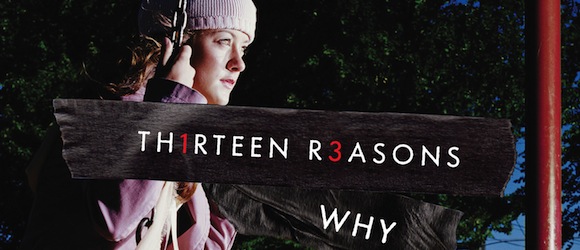But the sad truth is that men aren’t encouraged to write about women, or to be interested in “whatever it is women talk about,” as Jennifer Kesler‘s exasperated film teacher put it. Reticence on men’s part to read about girls isn’t some kind of inevitable byproduct of the inferiority of “women’s stories,” whatever those are. It’s the social upbringing that boys undergo that teaches them that anything women like is inherently inferior, just as it teaches women that if they enjoy the things that men like, they may not be real women. There’s also a genre snobbery occurring, at least on Lipsyte’s part, as he decries the rise of “novels that read like after-school specials” in the 80’s, and current books for boys that “read like video game manuals.” Gee, I wish someone had told the kids I tutored, boys and girls alike, that books like Go Ask Alice, The Face on the Milk Carton, and Crank, Ellen Hopkins‘ bestselling drug-addled prose poem, were beneath them, because they were too after-school-special to enjoy. Or informed the boys that they weren’t supposed to read and enjoy Darren Shan‘s Cirque du Freak series because only girls wanted to read about vampires, or tell the girls that they really needed to stop reading Walter Dean Myers‘ Monster because that was a boy book. Oh, and the boys I witnessed who actually devoured Laurie Halse Anderson‘s Twisted, about a high school boy on probation, and Cassandra Clare‘s City of Bones, about a girl who fights demons with the help of some hunky guy pals? I must have made them up.
Lipsyte laments that many of the so-called “edgy” books for boys–books which, he implies, include his own–are banned or not taught in schools. Because everyone knows that kids develop deep, lasting bonds with the books they’re forced to read in high school–oh, wait. Kids develop bonds with books that speak to them–like Jay Asher‘s sleeper hit Thirteen Reasons Why, which has been steadily climbing the bestseller lists over the last 4 years based solely on word-of-mouth from teen readers, to finally reach #1 on the New York Times list last month. Asher’s book, about a boy struggling to understand what caused an old crush to end her life, is simple, powerful, and immediately resonant with readers of all ages, regardless of gender.
There’s much that’s wrong with Lipsyte’s screed about gendered stories–starting with the fact that insisting that readers occupy a gender binary leaves no room for transgendered and gender neutral readers, or readers struggling with gender identity–but the most inherently offensive to me, as a writer, reader, and former tutor of kids who fall within YA’s mythical audience of “reluctant readers,” is that it perpetuates the awful idea that just having a good story isn’t enough. This argument ignores the success of books like Thirteen Reasons and pretends that they are isolated phenomena that have no relation to reality–a reality in which, according to Lipsyte, boys need “hard-core boy talk” about things like sports (girls don’t play those!), male bonds, and physical contact, while girls are presumably off standing in line buying Justin Bieber tickets. But all this argument does is further isolate boys inside of harmful gender stereotypes that we should be trying to dismantle.
The reality is that the publishing industry is already woefully behind in terms of representation, not only of girls but of non-white characters. The reality is that we have barely approached equal representation on any front, and that the young adult publishing industry is well-ahead of other fiction genres in terms of allowing main characters to be anything other than white men. And even in children’s lit, we still don’t even have a 50-50 equal share of female characters. Add to that the problem of whitewashing book covers–that is, the longtime industry practice of putting a white face on a book whose main character is non-white, because there’s also a prevailing industry insistence that non-white readers will buy books about white people, but white people won’t buy books about… wait, are you seeing a pattern yet?
The reality is that people are people, and that gender identity is no more or less fluid than what makes a great story and a bestselling book. Harry Potter showed us years ago that all it takes to unite young readers across gender lines is a good story with a fantastic premise. The Hunger Games has picked up where it left off. The only real mystery in the titular question of Lipsyte’s article is the mystery of when industry insiders will finally stop making excuses, and start giving us more diversity and better writing. Period.
Aja Romano blogs regularly at Bookshop.








Published: Aug 25, 2011 11:07 am